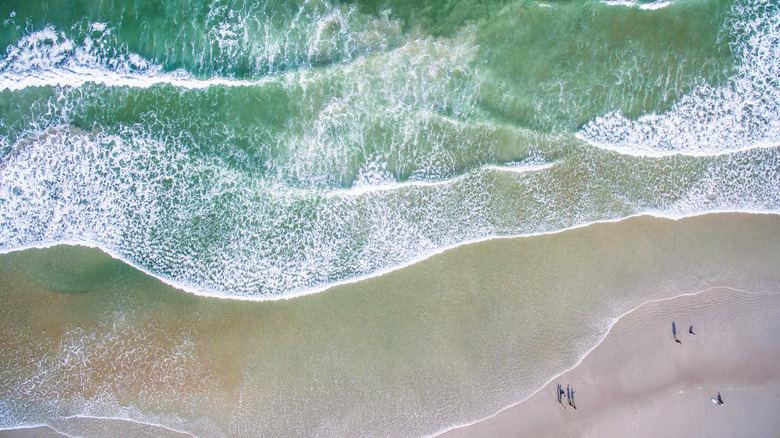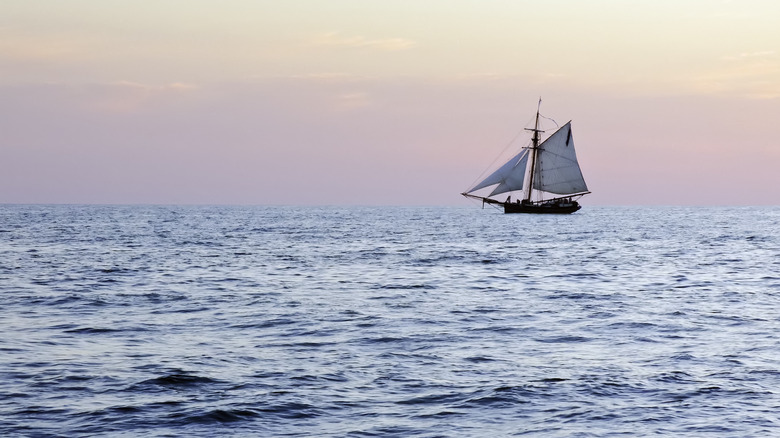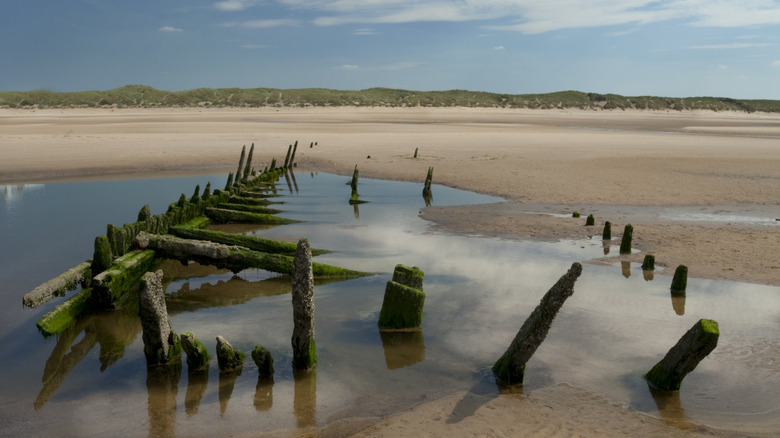The Puzzling Object That Emerged On Daytona Beach
In December 2022, a mysterious object surfaced in Daytona Beach, Florida, following two powerful hurricanes that swept through the region. The storms, Ian and Nicole, caused incredible damage to the coast, including unusually high erosion. According to the Daily Mail, Tamra Malphurs, a spokeswoman for Volusia County Beach, told WKBG Orlando that the erosion seen was "unprecedented," adding (via the Daily Mail), "I've been on the beach probably 25 years, and that's the first time I've seen it exposed."
At low tide, the strange object puzzled onlookers, who speculated that the 80 feet of exposed wood might have been a shipwreck, bleachers from NASCAR, or an old pier. State archaeologists got involved in the investigation with the intention of taking a closer look at the possible artifact. Chuck Meide, a maritime archaeologist from the St. Augustine Lighthouse Archaeological Maritime Program, said that the evidence favored a shipwreck.
The Reveal of the Daytona Beach Artifact
Researchers and volunteers proceeded to excavate the Daytona Beach artifact and uncovered ribs, iron bolts, and curvatures in the wood that proved the shipwreck hypothesis. Furthermore, they discerned the wreck was of a 19th-century merchant ship of private ownership. Chuck Meide told The New York Times that the crew believed it was a "cargo-carrying vessel that would have sailed in sight of land up and down the coast." He discerned from historical information about maritime travel that the vessel likely sailed from the Caribbean if it was hauling fruit. Alternatively, if it carried manufactured goods, it likely came from the southern coast. The archaeologists took 22 pieces of wood from the partially submerged ship in the hopes of analyzing them further, per The New York Times.
Meide also pointed out that with climate change and the resulting extreme weather, it's not too surprising to see artifacts emerge from the aftermath. According to Popular Science, drought recently affected the Mississippi River and exposed a 20th-century vessel in Baton Rouge, Louisiana. Thus, droughts in certain regions and hurricanes that battered the coast of Florida this season served as a double-edged sword for archaeologists.
History in the Sand
As the team continued to explore the wreckage, Chuck Meide noted that it would be difficult to identify the vessel by its name (via USA Today). Exploring databases at the Maritime Museum might yield results, however, given enough time. At this point, the mystery remains thick since Daytona Beach has only sparse records of shipwrecks. Meide added, though, that this does not mean there are no records to be found. On top of this, Meide and his team were not able to excavate the entire ship since it is protected in the deep sand and could be damaged if removed. However, they have uncovered enough of the wreckage to get measurements and samples, which should help in its identification.
Meide proposed that their current measurements should help them figure out the full length of the ship based on 19th-century insurance records that laid out the structural parameters of merchant ships. With all the history at their fingertips, the team remains hopeful that digging into the evidence will bring new information to light. Meide said (via USA Today), "We are looking for any clue. We could see tool marks we might be able to identify, but the clock is ticking on a site like this." Soon, the waves of the Atlantic Ocean will cover the historic vessel with sand. But researchers are glad that its location is mapped and will be available for archaeologists in the future.


